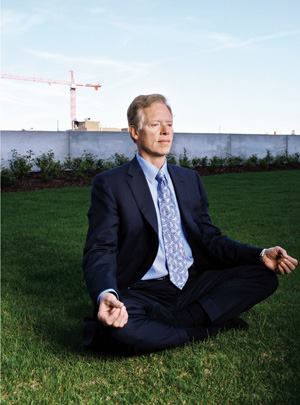BIG CHANGES As Fifield Cos. continues to evolve and adapt to the ever-changing national real estate market conditions, it is unveiling a number of new strategies. Today, the firm has its eye on major urban and infill markets across the country where housing demand is predicted to remain strong. To capitalize on opportunities in Phoenix and Orlando, for instance, Fifield is extending its project type from strictly high-rise developments to a lower-density wrap product. “Fifield has really made a name for itself on urban high-rises both office and residential,” says Connelly of Fifield. “But [high-rises] are not a solution for every location. You have to keep in mind your resident base and respond to that.”
What’s more, the current economy has led the firm to switch its residential development strategy from a mix of condos and rentals to strictly rentals—unless an unbelievable condo opportunity arises, that is. K Station shows the strategy at work: Due to the high demand and limited supply of rental units in downtown Chicago, the remaining five buildings under construction are all planned as rentals with the option to go condo. “Because we got the land at a very good basis [value] we can afford to build apartments [versus condos],” Cavenaugh says.
Fifield’s new development strategy is fueled by a recent joint venture with Pacific Life Insurance Co., a Newport Beach, Calif.-based insurance and investments product provider. Their goal for the next two years is to create a pipeline worth up to $400 million in apartment projects for urban and suburban markets including Chicago, California, Washington, D.C., southeast Florida, and Phoenix. “We like doing condos, but we like doing apartments a whole lot,” Fifield says. “There is consistent long- term demand for them. [We can] really make the commitment because we can consistently turn out a good volume of business there.”
The firm is making one more strategic change: It is transitioning from being strictly a merchant builder, which sells each building after its lease-up, to an ownership model, retaining one-third of its product for the longer term. The move allows the firm to use the properties’ depreciation to offset cash flow and pay lower capital gains taxes when they sell the buildings.
BUILDING ICONS As Fifield Cos. grows and expands, the firm is also dedicated to delivering projects that stand out architecturally from their competitors while still making a timeless, lasting impression on neighborhoods. To date, the company appears to be right on target. The Chicago Architecture Foundation’s river cruise lists the firm’s Left Bank project, designed by DeStefano and Partners, as an architectural sweet spot alongside such icons as the Sears Tower, Chicago Sun-Times Building, Civic Opera, and Chicago Mercantile Exchange.
Fifield points to 1200 Club View, the high-end L.A. condo community, as another example of his projects’ architectural excellence. The building, designed by Pasadena, Calif.-based Keating Khang Architecture, will feature a post-modern design—a crystalline exterior of glass and white stone with a modern cornice at the top of the building—that sharply contrasts the dated architecture of surrounding ’70s and ’80s era properties. It will offer what Fifield predicts to be a “timeless design.”
Allure Las Vegas also boasts a distinct look with a huge stainless steel mesh crown atop the building. Even Fifield wondered if the décor was going one step too far, but his team quickly learned that there’s no such thing as too much glitz in Vegas. While this type of high design often adds to the bottom line, the price is recouped through increased buyer and rental demand, says Fifield, who is extensively involved in the design process. “If you saw the reading material on the side of my bed you would think I was an interior designer,” he jokes. “I am reading Progressive Architecture and Interiors.”
Fifield predicts that many of his firm’s buildings will one day become city icons. In fact, the mayor of San Francisco already touted T h e Californian on Rincon Hill, a condo community under construction, as the city’s next landmark. It seems Fifield just might be right—after all, he does have a knack for seeing the future.
FIFIELD COS.
- Founded: 1977
- Headquarters: Chicago
- Employees: 47
- 2006 Revenue: $546 million (residential and commercial operations)
- Units completed in 2006: 525
- Units under construction: 1,361 (as of July 1)
- Geographic coverage: Florida, Washington, D.C., Chicago, Las Vegas, San Francisco, Los Angeles, Orange County, and Honolulu
LEADERSHIP LESSONS: STEVEN FIFIELD
- Age: 60
- First job: Financial analyst
- Favorite quote: “Do, or do not.” —Yoda
- Favorite recently read book:Looming Tower, on the origins of Al-Qaeda
- Best business decision: Struck out on my own in 1973
- Greatest challenge: Delegating more. I love the details.
- Best advice someone gave you: Think strategically and see the bigger picture
- Person you most admire: Leonardo da Vinci—a true Renaissance man
- Number of children: Seven
- Community involvement: Church, local school, children’s hospital
For More on Fifield Cos. See Related Article: A Train Runs Through It
